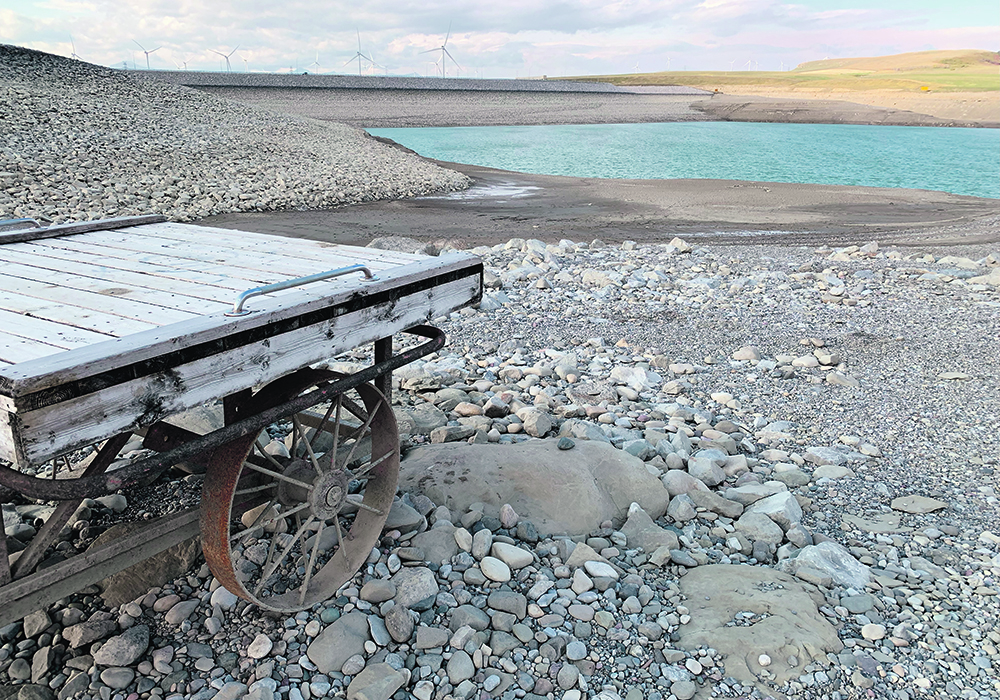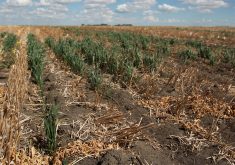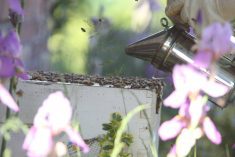Provincial government begins negotiations on water sharing agreements as it prepares for worst-case scenarios this year
MEDICINE HAT — An early February snowfall in Alberta from Red Deer south provided a reprieve to the province as it faces one of its worst droughts in decades.
But conditions are challenging and the province is gearing up to face them.
The government hosted a town hall meeting to inform stakeholders before launching its largest-ever round of water sharing agreement negotiations on Feb. 1.
Under Alberta’s first-in-time, first-in-right system of apportionment, the oldest water licences can issue a priority call over junior licence holders in the event of shortages.
Read Also

Research looks to control flea beetles with RNAi
A Vancouver agri-tech company wants to give canola growers another weapon in the never-ending battle against flea beetles.
During the last serious drought in 2001, that system was temporarily set aside and irrigation districts, municipalities and industry shared the available resources.
The aim is to repeat that effort in 2024 on a larger scale with stakeholders along the Red Deer, Bow and Oldman rivers.
The short-term prognosis for water availability is poor. Reservoir and mountain snowpack levels are at some of the lowest in a generation.
However, the wettest months historically are still to come, Stacey Smythe, Alberta Environment assistant deputy minister, said during the town hall meeting.
“We tend to see the most snow accumulate in late spring. We usually see the most rainfall in June. So, the most important time for precipitation is still to come,” she said.
“However, we are not even seeing normal snow accumulations yet, let alone the extra precipitation needed to help our reservoirs and rivers recover. This is clearly not the update we were hoping for.”
Many food-producing regions in Alberta and the entire country are affected by dry conditions. Smythe highlighted the potential impacts if those conditions extend beyond agriculture.
“More than agriculture will be impacted if this extreme level of dryness continues. The situation is going to impact all of Alberta. It is a societal issue, not an environmental issue.”
Smythe was joined by Alberta’s ministers of environment, agriculture and municipal affairs at the meeting, which included participants from municipalities, water co-ops, irrigators and environmental groups, among others.
Reiterating a message that Environment Minister Rebecca Shultz has been communicating, Smythe said, “when it comes to water, we are all in it together. This has never been more true than it is today.
“If we find ourselves in a severe drought situation later this year, all Alberta will need to conserve water.”
The government doesn’t expect groundwater licenses to be affected but will continue to track those levels.
Alberta is not at the point of declaring an emergency, said Shultz in response to questions, but it could be declared if conditions persist.
“We are preparing for any and all situations that we may be in but that is quite an extreme measure. We are not exactly there yet” she said.
Alberta moved into Stage 4 of its Water Management Plan in August. At that time, the M.D. of Pincher Creek had to start trucking in water when system intakes on the Oldman Dam reservoir fell below accessible levels.
Agriculture Minister RJ Sigurdson said mental health resources are available to producers stressed by drought.
“I’m very excited to have Agknow now available to our farmers and ranchers. (They offer) mental health supports that are designed specifically to understand the unique challenges that farmers and ranchers face every year,” he said.
“I encourage anybody, if they are feeling the pressures from stress or any mental health issues, to please contact Agknow at either agknow.ca or they can call 988. The phone lines are open 24-7, 365 days a year.”
As for municipalities, Municipal Affairs Minister Ric McIver said during the Feb. 3 opening of the Irvine Community Resource Centre that the alarm has been raised.
“Short term plans should be or (are) soon to be in place now,” he said. “I just think it’s common sense to try to be prepared, especially when the alarm bell has already been rung about a possible drought.”
Many municipalities are preparing for water shortages, though methods and levels vary.
Calgary introduced water restrictions in mid-August that lasted to the end of October and city council adopted a Drought Resilience Plan in the fall.
Lethbridge passed a resolution in January to take proactive measures with regional partners to address water supply concerns. It is examining ways to incentivize water conservation and is collecting feedback from residents.
Medicine Hat has not publicly released its Water Shortage Management Plan, saying it is a privileged document. After being asked by The Western Producer to justify withholding the water shortage plan, city officials provided a copy on Feb. 3 and committed to releasing it publicly to residents in the coming days.
Cypress County, which surrounds Medicine Hat, is using it’s 2022 Drought Management Plan that is tied to a former provincial strategy.
Alberta has 51 water shortage advisories in place that cover much of the province.


















